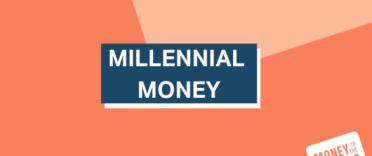This week's Millennial Money video is for those who wish to begin investing but don't know where to start or are intimidated by jargon investing terms. So in the first of a short investing series, I will be asking Damien what is the difference between active and passive investing?
What is the difference between active and passive investing?
The difference between active and passive investing is that a passive investment is run by a machine and an active investment is run by a human. Active investing is something that is normally driven by a viewpoint or a process whereas passive investing will usually track an overall index such as the FTSE 100.
Active investing
With active investing there is generally a fund manager; an individual who specifically decides where the money is invested. For example a fund manager may decide to invest in specific companies (rather than the wider market) that they believe will outperform in the coming years.
Passive investing
With passive investing you tend to 'ride the wave' of the general stock market rather than investing in specific stocks and shares. Passive investors tend to invest in funds or ETFs that track the index. This gives you a general sense of the market and its ups and downs.
Passive investing is done by an algorithm that effectively buys the shares of each company in the same proportion and you just pay the machine (robo-adviser) to do this for you. Passive investing is good for beginners who have little understanding of how investing works as it allows you to invest and learn about the market at the same time.
What is better, active or passive investing?
There is a lot of debate about whether active or passive investing is better but ultimately they are two completely different styles. I don't think either one is better, however, there is evidence that shows in the long term very few managers or people have successfully outperformed the market. If you move your money around from manager to manager that is different, there is the possibility your money will outperform the market but if you stayed with one fund manager permanently it is highly unlikely they would outperform the market. This is why in recent years there has been a significant increase in passive investing.
Active investing is universally more expensive than passive investing because of the human element and the fact that fund managers and analysts are expensive. Passive investing however is low cost as it effectively requires just an algorithm and a machine. As an investor, the biggest thing you can control is the cost of your investments, which is another reason why passive investing has an advantage over active investing in the long term.
Investing platforms
There are a number of active and passive investing platforms and we look at them all. Take a look at our best buy tables for detailed information on each provider including costs and detailed independent reviews.
- Robo adviser best buy tables
- General Investment accounts best buy table
- Stocks and Shares ISA best buy table
Investing jargon Buster
- ETF - An Exchange Traded Fund is a form of investment fund that holds multiple assets
- Fund - A fund is an amount of money put together by numerous investors and invested by a fund manager
- FTSE 100 - The 100 largest companies in the UK ordered by market capitalisation
- Active investing - A form of investing involving a human
- Passive investing - A form of investing involving a machine/algorithm
- Stock market - The stock market is where people buy and sell business shares
- Robo adviser - A digital platform that manages your platform using an algorithm
- Fund manager - A fund manager is responsible for implementing a fund's investing strategy and trading activity
If you have any particular burning questions or topics that you would like to be discussed, email [email protected].
Head over to our social media accounts too:
Facebook - Money to the Masses
Twitter - @money2themasses
Instagram - @moneytothemasses
Youtube - Money to the Masses




